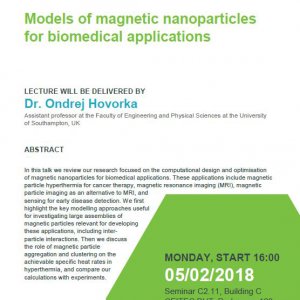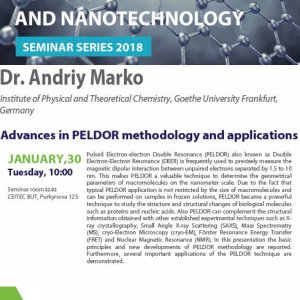Empirical methods for fast calculation of partial atomic charges
Electronegativity equalization methods (EEM) are one kind of fast approaches for charge calculation. These methods (based on DFT) are the alternative to calculation of charge distribution using ab-initio methods. EEM are significantly faster than ab-initio methods and their accuracy corresponds to ab-initio methods.
In the project, we first implemented two equalization methods: classical EEM and its extension ABEEM (atom-bond EEM). Then, we optimized and parallelized our code and obtained very effective program EEM Solver for charge calculation. We performed parameterizaton of the EEM for large sets of organic, organohalogene and organometal molecules. Recently, we developed approaches for charge calculation in metalloproteins and applied them for research of apoptotic proteins [Ionescu 2013, Ionescu 2012].
Development of pKa predicting QSPR models based on atomic charges
The acid dissociation constant pKa is a very important molecular property, and there is a strong interest in the development of reliable and fast methods for pKa prediction. We have evaluated the pKa prediction capabilities of QSPR models based on empirical atomic charges calculated by the Electronegativity Equalization Method (EEM). We use different quantum mechanical (QM) charge calculation schemes to collect EEM parameter sets. We use training set of small molecules (e.g. substituted phenols) to create QSPR model employing calculated charges. Quality of the model is evaluated by comparison with experimentak pKa values. Our studies show that EEM QSPR models constitute a fast and accurate pKa prediction approach that can be used, for example, in virtual screening. [Svobodová 2013, Svobodová 2011]
Finding, comparing and characterization of protein structural motifs
We are focused on development of software tools for biomacromolecular fragments analyses, searching tunnels and cavities in biomacromolecules and calculation of their physico-chemical properties. Such spots are often responsible for biological activity of the biomacromolecules and recognizing them may uncover important candidates for targeting drugs.
We developed software tool SiteBinder for the multiple superimposition of large sets of protein structural motifs. Our superimposition methodology performs a systematic search for the atom pairing that provides the best fit. During this search, the RMSD values for all chemically relevant pairings are calculated by quaternion algebra. This approach guarantees that the best fit will be found and can be applied even when sequence similarity is low or does not exist at all. The software is able to process up to thousands of protein structural motifs in a very short time, and which provides an intuitive and user-friendly interface. We tested the software with 1000 experimentally determined structures and demonstrated its applicability using studies od PA-IIL lectin, zinc finger central motifs and BH3 domains from pro-apoptotic proteins. [Sehnal 2012]
Biomolecular channels play important roles in many biological systems, e.g. enzymes, ribosomes and ion channels. We developed web-based interactive MOLEonline application for the analysis of access/egress paths to interior molecular voids. It enables easy-to-use and interactive analyses of (bio)macromolecular channels, tunnels and pores [Berka 2012]. Latest version of the software enables to estimates physicochemical properties of the identified channels, i.e., hydropathy, hydrophobicity, polarity, charge, and mutability. We used it to assess the variability in physicochemical properties of eighty X-ray structures of two members of the cytochrome P450 superfamily [Sehnal 2013].
Structure validation has become a major issue in the structural biology community, and an essential step is checking the ligand structure. This developed MotiveValidator, a web-based application for the validation of ligands and residues in PDB or PDBx/mmCIF format files provided by the user. MotiveValidator is able to evaluate in whether the ligand or residue has a correct annotation (3-letter code), i.e. if it has the same topology and stereochemistry as the model ligand or residue with this annotation. If not, MotiveValidator explicitly describes the differences. MotiveValidator offers a user-friendly, interactive and platform-independent environment for validating structures obtained by any type of experiment. MotiveValidator can process thousands of ligands or residues in a single validation run that takes no more than a few minutes. MotiveValidator can be used for testing single structures, or the analysis of large sets of ligands or fragments prepared for binding site analysis, docking or virtual screening. [Svobodová 2014]
PUBLICATIONS
Berka, K.; Hanák, O.; Sehnal, D.; Banáš, P.; Navrátilová, V.; Jaiswal, D.; Ionescu, C.-M.; Svobodová Vařeková, R.; Koča, J.; Otyepka, M.; 2012: MOLEonline 2.0: Interactive Web-based Analysis of Biomacromolecular Channels. Nucleic Acids Research, 40 (W1), W222–W227. doi:10.1093/nar/gks363
Ionescu, C.-M.; Geidl, S; Svobodová Vařeková, R.; Koča, J.; 2013: Rapid Calculation of Accurate Atomic Charges for Proteins via the Electronegativity Equalization Method. Journal of Chemical Information a Modeling, 53 (10), 2548-2558. doi:10.1021/ci400448n
Ionescu, C.-M., Svobodová Vařeková, R.; Prehn, J.H.M.; Huber, H.J.; Koča, J.; 2012: Charge Profile Analysis Reveals That Activation of Pro-apoptotic Regulators Bax and Bak Relies on Charge Transfer Mediated Allosteric Regulation. PLoS Computational Biology, 8 (6), e1002565. doi:10.1371/journal.pcbi.1002565
Sehnal, D.; Svobodová Vařeková, R.; Berka, K.; Pravda, L.; Navrátilová, V.; Banáš, P.; Ionescu, C.-M.; Otyepka, M.; Koča, J.; 2013: MOLE 2.0: advanced approach for analysis of biomacromolecular channels. Journal of Cheminformatics, 5 (39). doi:10.1186/1758-2946-5-39
Sehnal, D.; Svobodová Vařeková, R.; Huber, H.J.; Geidl, S.; Ionescu, C.-M.; Wimmerová, M.; Koča, J.; 2012: SiteBinder: An improved approach for comparing multiple protein structural motifs. Journal of Chemical Information and Modeling, 52 (2), 343–359. doi:10.1021/ci200444d
Svobodová Vařeková, R.; Jaiswal, D.; Sehnal, D.; Ionescu, C.-M.; Geidl, S.; Pravda, L.; Horský, V.; Wimmerová, M.; Koča, J.; 2014: MotiveValidator: interactive web-based validation of ligand and residue structure in biomolecular complexes. Nucleic Acids Research, 42 (W1), W227-W233. doi:10.1093/nar/gku426
Svobodová Vařeková, R.; Geidl, S.; Ionescu, C.-M.; Skřehota, O.; Bouchal, T.; Sehnal, D.; Abagyan, R.A.; Koča, J.; 2013: Predicting pKa values from EEM atomic charges. Journal of Cheminformatics, 5 (18). doi:10.1186/1758-2946-5-18
Svobodová Vařeková, R.; Geidl, S.; Ionescu, C.-M.; Skřehota, O.; Kudera, M., Sehnal, D.; Bouchal, T.; Abagyan, R.A.; Huber, H.J.; Koča, J.; 2011: Predicting pK(a) values of substituted phenols from atomic charges: Comparison of different quantum mechanical methods and charge distribution schemes. Journal of Chemical Information and Modeling, 51 (8), 1795–1806. doi:10.1021/ci200133w







